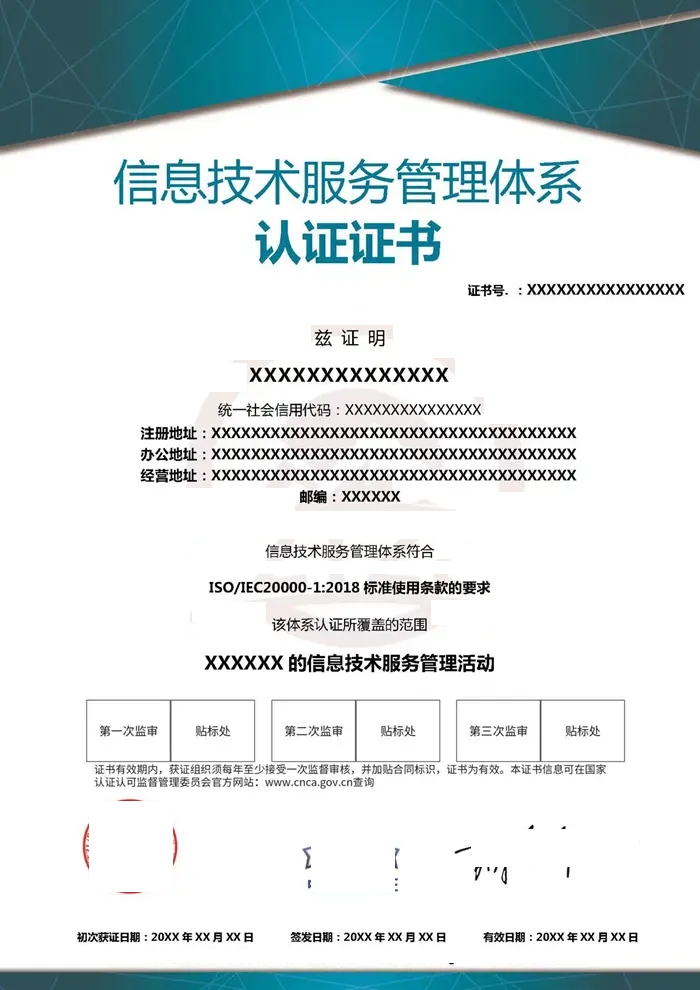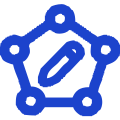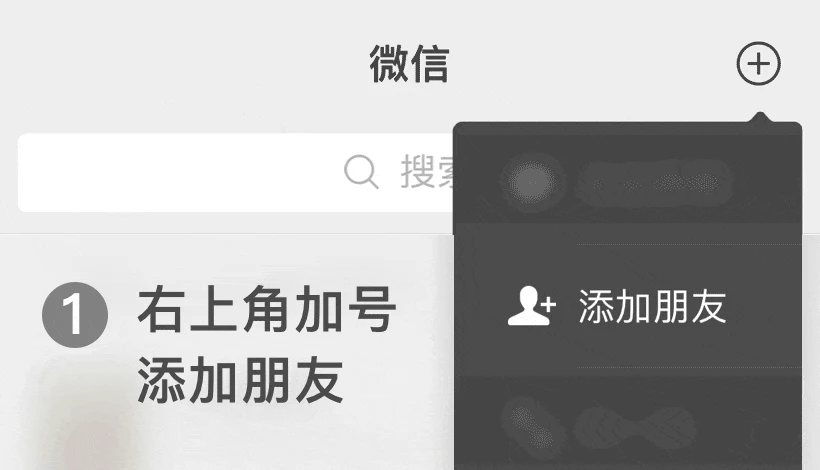
 Professional services are guaranteed
Professional services are guaranteed One on one full process guidance
One on one full process guidance Efficient and fast experience
Efficient and fast experience1.1 Development History
ISO/IEC 20000 originated from the ITIL (IT Infrastructure Library) best practice framework published by the British Standards Institution (BSI). It was first released as an international standard in 2005, and the latest versions are ISO/IEC 20000-1:2018 and ISO/IEC 20000-2:2019 (implementation guidelines) revised in 2018. This standard is divided into two parts:
Part 1: Normative requirements for defining Service Management System (SMS)
Part 2: Provide practical guidance and case analysis
1.2 Scope of Application
Applicable to all organizations that rely on IT service delivery, including:
Internal IT department
Outsourcing service providers (such as cloud computing, hosting services)
Cross industry enterprises (finance, healthcare, manufacturing, etc.
ISO/IEC 20000 requires organizations to establish a service management system based on the PDCA cycle (Plan Do Check Improve), covering the following key elements:
2.1 Service Management System (SMS) Requirements
Organizational Environment and Leadership: Clarify the alignment between IT service strategy and business objectives, requiring senior management to provide resource support and allocate responsibilities.
Risk management: Identify internal and external risks related to IT services and develop control measures.
2.2 Service Delivery Process
Service Level Management (SLM): Define service catalogs, negotiate and sign Service Level Agreements (SLAs) with customers, and monitor performance.
Capacity and availability management: Ensure that IT resources meet current and future needs, optimize service availability.
Continuity management: Develop a Disaster Recovery Plan (DRP) to ensure the continuous operation of critical business services.
2.3 Relationship and Supplier Management
Customer Relationship Management (CRM): Establish communication mechanisms, regularly collect customer feedback, and improve services.
Supplier management: Evaluate supplier performance to ensure that outsourced services meet contract requirements.
2.4 Event, Problem, and Change Management
Event management: Quickly respond to service interruptions and minimize the impact on business.
Problem management: Analyze the root cause of events to prevent recurrence.
Change management: Control change risks through standardized processes to avoid service interruptions.
2.5 Service Report and Continuous Improvement
Service report: Generate key performance indicator (KPI) reports to make service status transparent to management and customers.
Continuous improvement: Optimize the management system through internal audits, management reviews, and Service Improvement Plans (SIP).
1. Improve service quality and efficiency
Reduce human errors and shorten fault response time through standardized processes;
Quantify service performance based on SLA and enhance customer trust.
2. Optimize resources and cost control
Clarify role responsibilities and reduce repetitive work;
Reduce system downtime losses through preventive maintenance.
3. Enhance compliance and market competitiveness
Meet the compliance requirements of IT services in industries such as finance and healthcare;
Obtain international certification qualifications to enhance bidding competitiveness.
4. Support business innovation and expansion
Quickly respond to market demand through a flexible IT service architecture;
Provide management foundation for new technology applications such as cloud computing and big data.
(1) List of Application Materials
1. System documents
Service Management Manual: Define SMS policies, objectives, and overall framework.
Program files: covering 26 core processes required by the standard (such as event management program, change control program, etc.).
Record templates: Service Level Agreements (SLAs), Customer Satisfaction Surveys, Audit Reports, etc.
2. Operational evidence
Service delivery records for the past 3 months (such as event handling work orders, change request records).
Service Level Agreement (SLA) and monitoring report on actual achievement.
Internal audit report and management review report (including improvement plan).
3. Organization and Legal Documents
Business license and organizational chart of the enterprise.
Description of IT service scope and personnel responsibilities.
4. Certification Application Form
The formal application documents submitted to the certification body include the basic information of the enterprise and the scope of certification.
(2) Application requirements
1. System establishment and operation
We have established a Service Management System (SMS) in accordance with the requirements of ISO/IEC 20000-1:2018 standard, which fully covers the entire lifecycle of IT services (design, delivery, improvement, etc.).
The system must operate effectively for at least 3 months and retain traceable records (such as service reports, change logs, event handling records, etc.).
2. Internal audit and management review
Complete at least one internal audit to verify system compliance.
Complete management review, with senior management making decisions and improvement commitments on the effectiveness of the system operation.
3. Clear scope of application
Clearly define the scope of certification (such as "XX company cloud computing operation and maintenance services") to ensure consistency with actual business.
4. Compliance requirements
No major legal disputes or IT service related violations recorded.
(3) Precautions
• Selection of certification body: It is necessary to choose an organization recognized by the International Accreditation Forum (IAF), such as BSI, T Ü V, SGS, etc.
• File authenticity: All records must be authentic and traceable, avoiding formal documentation.
• Preparation in advance: It is recommended to conduct pre-approval or gap analysis before formal application to reduce review risks.
By meeting the above conditions and preparing all necessary materials, enterprises can efficiently initiate the certification process and achieve international standardization of IT service management.

Key precautions
Time cycle: Complete certification usually takes 6-12 months, depending on the level of readiness of the enterprise.
Core investment: high-level support, cross departmental collaboration, and resource allocation (such as IT tools, training).
Choose a certification body: It is necessary to identify authoritative organizations recognized by the IAF (International Accreditation Forum), such as DNV, BSI, SGS, etc.
Through this process, enterprises can systematically establish IT service management capabilities and enhance market credibility and competitiveness through international certification.




Wechat ID:Siterui888888
Add a wechat friend to get free plans and quotations


 Contact
Contact




 定制化解决方案
定制化解决方案 专业咨询指导
专业咨询指导 透明化服务
透明化服务 长期顾问式合作
长期顾问式合作